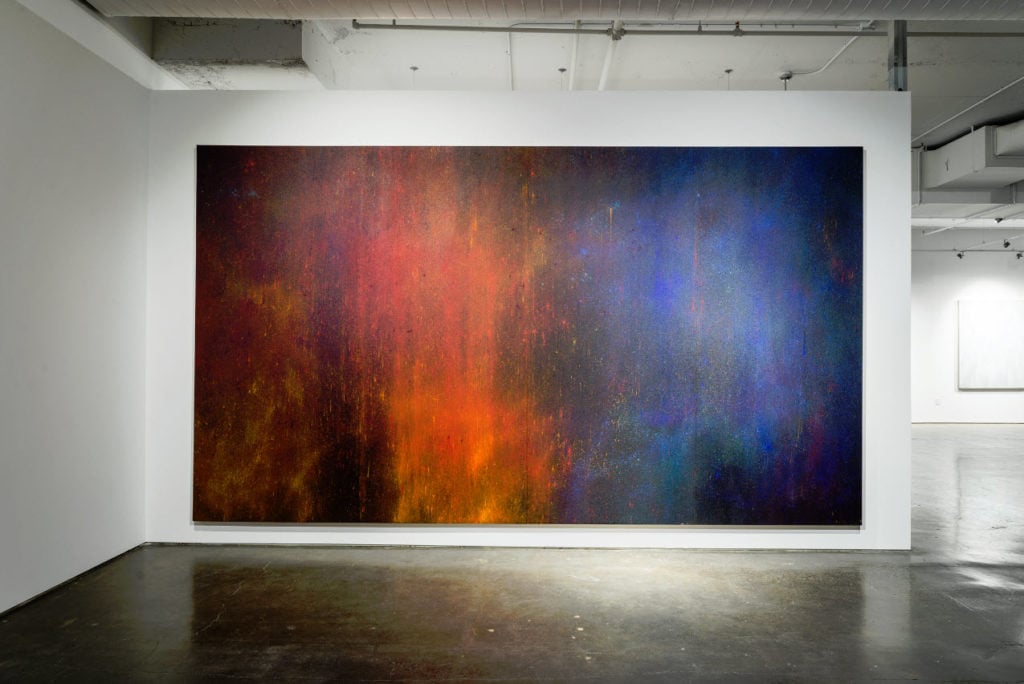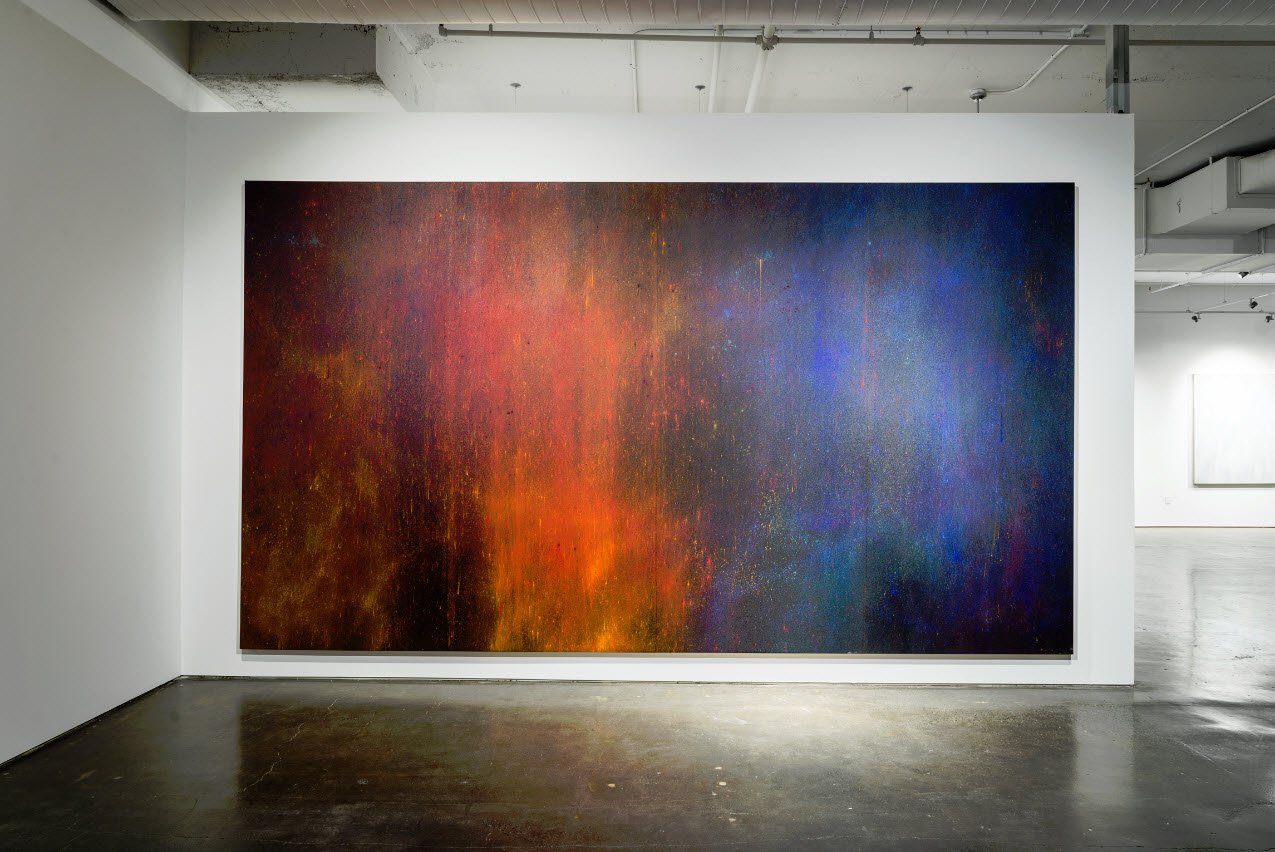Art & Exhibitions
artnet Asks: Natvar Bhavsar, Veteran Artist
He's been painting for 50 years, and go for a 1,000 more.

He's been painting for 50 years, and go for a 1,000 more.

Artnet News


Natvar Bhavsar, Vaatri (1969) installation view. Courtesy of Cara Gallery.
Painter Natvar Bhavsar was born in Gujarat, India, and arrived in the United States in 1962 to study art. Now, over 50 years later, his expansive career is being celebrated at Cara Gallery in New York, with the exhibition “NATVAR BHAVSAR: Five Decades” presenting over 30 paintings and drawings made from the 1960s to the present. Here, we ask this prolific artist to introduce us to his artistic journey and process.
How did your career begin? What brought you to New York?
My life has been filled with unpredictable and unusual events since childhood. My coming to America in 1962 was perhaps the most significant event—as I never thought there was the financial possibility of leaving India to go abroad. A year after my arrival, I received a foreign student scholarship to the University of Pennsylvania’s graduate school of fine arts, where I had the good fortune of learning about and meeting the most avant-garde creative people of the time. Professor Piero Dorazio, Professor Angelo Savelli—both renowned Italian artists—Otto Piene of the Zero Group, and the architect Louis Kahn were the pioneering leaders of the school.
Upon graduation, I was awarded the John D. Rockefeller III grant. This helped me to begin pursuing my life in art here in New York, since 1965. My first studio in New York at 80 West 3rd Street and was, fortunately, right behind the Judson Church on Washington Square Park. This was where some of the most exciting cultural and political dialogues of the time were happening, where John Cage, Merce Cunningham, Alan Ginsberg, and more interacted through happenings that brought all the arts together, including dancers, writers, and musicians.
During this period, through Piero Dorazio’s introduction, I was able to meet and develop friendships with many of the major contributors to the art world, including Barnett Newman, Mark Rothko, Adolf Gottlieb, Robert Motherwell, Clement Greenberg, and many more.

Natvar Bhavsae, PR-KRI-TEE III (2011). Courtesy of Cara Gallery.
What are some things that inspire you?
Expressive and creative emersion into the process of art-making, observing the eternal flux and abundant visual play in nature, and the gifts left to us by the creative personalities of history through architecture, music, and poetry.
In my expressive moments, I have said that my artistic journey of exploring is akin to my taking a walk in the wilderness.
Describe your creative process. What kinds of patterns, routines, or rituals do you have?
Since my arrival in New York City in 1965, I have maintained, on a daily basis, an uninterrupted, rigorous, and spirited involvement in my creative engagement. This brings me fulfillment and joy, and that freedom in learning through creation and observation has remained at the core of my art.
Now, nearly 50 years later, this uninterrupted flow of painting, emphasizing and exploring the limitless possibilities of color, has led to my works being exhibited continuously since my first exhibition in 1968 on Boston’s Newbury Street.
What have been some of the most memorable trips you have taken?
Throughout my life, I have traveled with my family to Europe and India to see art at great museums and to visit archeological sites. The caves of Ajanta and Ellora in India (near Aurangabad), which holds art made from 3 BC to 11—painting, sculpture, and architecture—built with support of kings, the mercantile class, and monks. Those artists have remained unnamed, but for me and my family the caves have become our most cherished place to revisit again and again.
My most recent revisits were to Italy and Spain—visiting the Prado was a renewal of my spirit, underlining my eternal hunger for witnessing mastery. Living in New York, I have chosen to see practically all the major events at the great museums in the city—the Frick, the Morgan, the Metropolitan, the Guggenheim, etc. Attending last week’s Frank Stella retrospective at the newly built Whitney brings to my mind a renewed reverence to what I have experienced over the past decades since my arrival in New York. The momentous contribution of Frank’s art represents a great affirmation of his creative agility and courage. These are the blessings to witness of living in this great city of ours.

Navtar Bhavsar, SAMA-LAA (1969). Courtesy of Cara Gallery.
If you weren’t an artist, what do you think you would be doing?
In many interviews in the past I have expressed my eternal enthusiasm by saying, “I would want to paint for 1,000 years.” I said this about 40 years ago, and I would say the same thing today at 81 years of age.
Which collectors would you most like to collect your work?
Over the span of my creative life, my art has been acquired by individuals who are passionate about experiencing the art. Major corporations for their boardrooms have also acquired many of my artworks.
Although there are a significant number of my artworks acquired by private and corporate collections, the number of museums collections lag behind—I would like to see that change. Also, my birth country India has hardly experienced or collected my art, except for a handful of collectors who have a few of my works. I would like to see that change too.